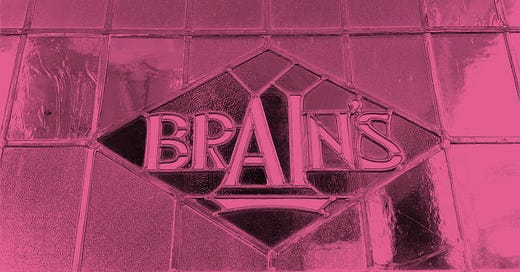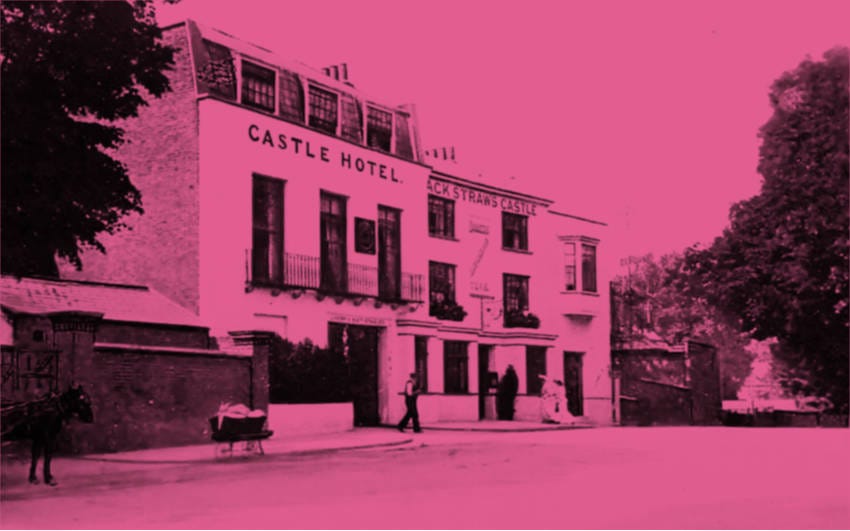Stress and confusion: the concept of cognitive load in the world of beer
Whether we realise it or not, most of us seek pubs (and beers) which require us to use less brain power, and to do less on-the-fly risk assessment.
“You just like pubs where everyone is like you,” said a narky comment on the blog a few months ago.
And, yes, that’s probably true at a basic level – because those pubs require less effort on a weary Wednesday night, or lazy Sunday afternoon.
Which is to say, they come with a lower ‘cognitive load’.
Cognitive load is a bit of professional jargon that refers to the amount of mental processing we expect people to do when accessing products and services.
In our day jobs, we both spend a lot of time trying to reduce cognitive load for the users of websites, apps, spreadsheets, and financial modelling tools.
In user interface design, the goal is always for interfaces to be instinctive and easy to use, even for people who…
aren’t tech savvy
have disabilities
speak English as an additional language
are using a tiny phone with a cracked screen, on a crowded bus, at the end of a bad day, with a migraine coming on
When it comes to pubs, the cognitive load is increased the minute you go to a pub you’ve never visited before.
You need to understand the vibe, the layout, and the offer.
That processing might also include working out if you’re welcome, or even if you might be in danger.
Any attempt to go for a beer in a country or culture that is not your own can be extra difficult. Is it bar service, or will a waiter come at some point? Are we supposed to tip? What’s an acceptable thing to order here, and what will make them think I’m a rube?
In the context of a holiday, a slight increase in cognitive load can be pleasurable, and part of the fun. It’s about the line between stress and stimulus – and perhaps more manageable when you’ve spent the rest of the day reading Take a Break on the beach, rather than doing a day’s work.
Beyond cultural stuff, cognitive load can also be increased by the presence of noisy crowds, background music, flashing lights from fruit machines, multiple TV screens, and so on.
This can be a particular problem for neurodivergent people.
Including, perhaps, the kind of people who, for example, might join a special club to obsess over beer, doggedly ‘tick’ different beers, log every different beer they drink on a special app, or enjoy pedantic arguments over small details of beer history. (This is not intended to be flippant.)
When cognitive load gets too high, it’s easy for neurodivergent people to suddenly tip over into feeling overwhelmed or panicky.
Noisy environments, including those that are visually noisy, can also affect people who are already working hard to process what’s going on around them. That might be because they have sight loss, hearing loss, dyslexia, or other disabilities.
Or it might just be that, say, they’ve got a newborn baby and haven’t slept properly in weeks.
Another way we increase the cognitive load for drinkers is by concealing or obfuscating important information, or failing to provide it at all.
How does this pub work? What products are on offer? How much do they cost?
These are all questions which make customers work harder – and might just prompt them to say, sod it, I’m off to Wetherspoon’s.
How can pubs and breweries reduce cognitive load?
We mentioned Wetherspoon pubs just now. We’re certain that part of their popularity, and the popularity of chains in general, stems from the fact that they provide (terms and conditions apply) an experience that:
is consistent
has clear, visible instructions
offers clarity about products and pricing
can be accessed through an app
has reduced stimulus (they are boring)
The experience of a Wetherspoon will rarely be thrilling but at least (kliche Klaxon) “You know where you are with a ‘Spoons”.
All sorts of venues could, and can do, do some of the same things.
At Lost & Grounded, our local brewery taproom in Bristol, there are printed beer lists on every table, and on the bar counter. This means that when the staff ask “What can I get you?” we’ve had time to think about it and understand what’s available – rather than having to say “Dunno, what have you got?” and listen to a long spiel.
At The Drapers Arms, one of our favourite Bristol pubs, the beer list is chalked in great big letters on a board some distance from the bar. It provides just enough information – beer name, brewery, ABV, style, price – to help people make a decision before they get to the counter.
Both The Drapers and The Good Measure (another great pub) have acoustic baffles hanging from the ceiling. That means that, even when they’re busy, and noisy, at least you’re not also having to work double hard to filter out echo and reverberation.
One tricky question is the order in which people get served at the bar. Queuing in the pub is a controversial topic but there’s a reason British people like queues in almost every other context: they reduce the cognitive load of getting served when it’s your turn.
If we don’t want queues in pubs, it is at least worth thinking about how to reassure customers that they’ll get served when it’s their turn – because the bar staff know and have it under control.
When it comes to beer, well, you’re walking a fine line between clarity and creativity. If possible, it would be good to see breweries focus on ensuring key text is visible and legible on their packaging.
And by key text, we mean information that helps customers understand what they’re buying, and whether they might enjoy it.
There are thousands of words of critical writing about the concept of beer styles but the reason they stick around is because they reduce the amount of work you have to do.
You learn that you like IPAs, or sour cherry-flavoured beer. So, you gravitate towards beers with IPA or ‘cherry sour’ written clearly somewhere on the label.
“What’s your most normal lager, mate?” is another way consumers attempt to solve the same problem.
In the more ‘out there’ world of craft beer the use of brand codes might also be part of the same process. Conveying tasting notes for a peanut, chocolate and caramel imperial stout is tricky; but if you make the can look like a Snickers bar… job done.
Now, of course we’re not saying that all pubs and breweries should be the same, like a sort of plain, black-and-white GOV.UK experience for boozing.
It’s as much about finding places and products that work for your brain as much as anything.
And the single greatest way to reduce the cognitive load of any experience is to keep doing it.
However weird and complicated your local pub might be, by the time it is your local, you’ll know how it works and won’t find it weird at all.
Two pubs in Dracula
We’ve spent the past week or so in Transylvania which prompted us both to re-read Bram Stoker’s 1897 novel Dracula.
There’s a lot of slightly tacky Dracula tourism with several castles and other locations trading on their associations with the historic figure of Vlad Țepeș (the Impaler), AKA Vlad Drăculea.
There’s lots of interesting stuff in the novel but one thing we noticed this time is that a couple of important visitors actually visit a famous London pub, Jack Straw’s Castle, in Hampstead. It’s pictured above in a period postcard via Michael Jefferies on Flickr.
In a passage supposedly written in his diary Dr. Jack Seward mentions that he and Professor Van Helsing, the vampire hunter…
dined at “Jack Straw’s Castle” along with a little crowd of bicyclists and others who were genially noisy. About ten o’clock we started from the inn. It was then very dark, and the scattered lamps made the darkness greater when we were once outside their individual radius.
They then go to the tomb of Lucy Westenra, who Dracula has turned into a vampire, and prevent her from abducting and feeding upon a child. Once this macabre business is done, they briefly visit another famous pub: “By good chance we got a cab near the “Spaniards,” and drove to town…”
On the blog
In the run up to this big trip across Europe we were, let’s be honest, running low on energy, and our blogging had become a bit less frequent. Still, we managed to write a few bits and pieces.
First, looking ahead to the Continent, we wrote about the difficulty of finding good Czech beer, in good condition, in good glassware, in Bristol.
Then, still on the subject of lager in Bristol, we wrote about Zero Degrees for The Session #145. With Matthew Curtis’s prompting, we tried to practice “critique, not criticism” – thinking about why it is that what doesn’t work, doesn’t work.
Finally, most recently, we wrote some almost-live notes on our experience of drinking beer in Timișoara, Romania, where there’s both an important historic brewery and some upstart craft brewers.
We also wrote weekly round-ups of news, nuggets and longreads, with accompanying footnotes and bonus links on Patreon.
===
That’s your lot for this month. Will there be a newsletter next month? Maybe, depending on where we are on our travels, and whether we have Wi-Fi, power, time…
Ray & Jess








Great reflections. I think US breweries do big, explicit signage and detail very well, likewise they have very clear queue systems (especially in hype breweries) which reduces cognitive load. It’s a lot of the parameters you associate with Wetherspoons, without the boring part. Additionally, with acknowledgment of generalising, their (often cloying and inauthentic) overfocus on attentive service can actually help.
US dive bars though? Good luck 😅